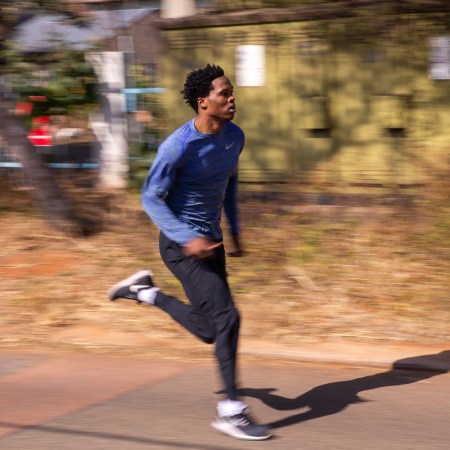It’s understandable if you get self-conscious at the gym, but you shouldn’t let that anxiety get in the way of you attempting difficult workouts (like a pull-up program), sourcing help when needed (like a facility’s assisted weight features) or making use of machines that most people gave up on years ago (like the StairMaster).
Using the full scope of one’s gym membership means experimenting in public — trying, tinkering and often failing. It also requires a willingness to look a little “silly” from time to time. Like pumping away on an elliptical machine backwards. Yes, backwards.
How to Get Yourself the Grip Strength of a Climber
A primer for keeping your fingers and forearms in fighting shapeThe Elliptical Still Matters
The elliptical, for a quick refresher, is a low-impact cardio trainer that hit the market in the 1990s. The machine’s “four-bar linkage” allows gym-goers to train the upper-body and lower-body at the same time. One study found that the elliptical generates more muscle activation than walking or stationary cycling.
The machine has been plucky over the last few decades, surviving several predictions of its imminent demise. How has it hung around? Well, it isn’t because it offers a world-beating workout — the elliptical is much more of a “muscle toner” than a builder. But it’s a great way to elevate your heart rate for a half hour or longer, without putting pressure on your tendons and joints.
If you’re struggling to establish any semblance of a cardio routine, we recommend giving the elliptical a try. It’s a low-stakes way to get acquainted with your heart rate zones, before you make the leap to jogging. And if you’re a more seasoned exerciser wondering what use an elliptical could give you, try pedaling backwards. Reversing the motion creates a surprising doozy of a leg workout, without the need for any additional equipment.
Backwards Benefits
Using the elliptical backwards shifts the onus of the effort to your hamstrings, along with your glutes and calves. That’s some dream engagement for the posterior chain, which is a key bedrock of any sustainable fitness routine. (A strong posterior chain can help you explode out of a starter’s block, but also pick a grandchild up off the floor.) These are muscles you want to maintain for lower body strength, posture and functional stability.
If you try this out at the gym, you’ll be able to tell almost immediately that this “retro mode” is more difficult on the elliptical. It’s more of a swipe than a pedal. You have to concentrate more than usual, and engage your core, which gets the stabilizers firing. You’re also likely to burn more calories, too.
Backwards running has won legions of supporters in recent years — I often see people running the infield of my local track in reverse — as it recruits unfamiliar muscle patterns. The practice trains muscles differently, while fine-tuning your sense of balance and proprioception along the way. (After all, retro runners are receiving weight in their lower half, instead of pushing into and springing off the ground.) Fascinatingly, this sort of reverse movement also has the ability to strengthen small tendons and alleviate stress in areas around the knees.
Does it look silly? Of course it does. You might feel silly being on an elliptical in the first place. But give it a try. Your gym routine deserves little shocks to the system once in a while — opinions of strangers be damned. Otherwise it’ll get stale, and you’ll get bored. In order to really feel the difference, we recommend going forward on the elliptical for 15 minutes, going backwards for 30, then finishing with another 15 minutes forwards.
The Charge will help you move better, think clearer and stay in the game longer. Subscribe to our wellness newsletter today.




















